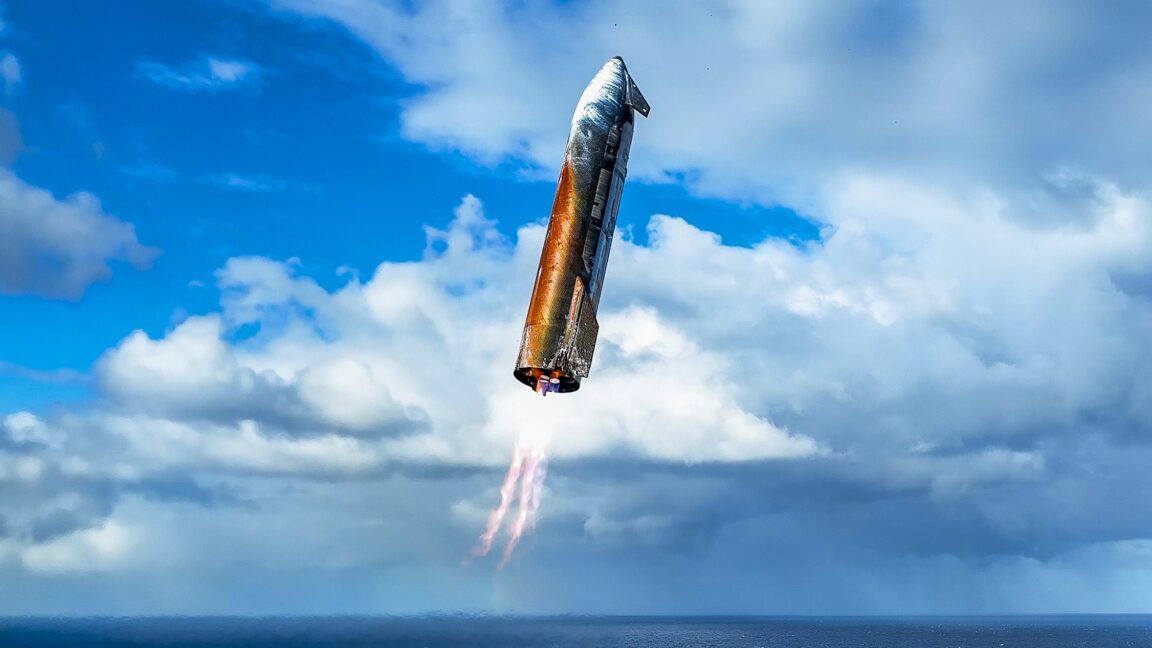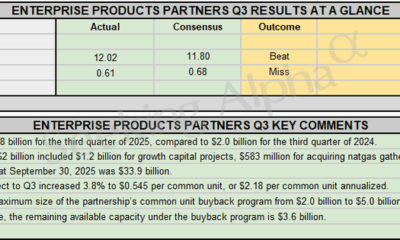Science
SpaceX Analyzes Starship Flight to Solve Heat Shield Issues

SpaceX has identified critical improvements needed for its Starship after the last test flight on August 26, 2023. During a presentation at the American Astronautical Society’s Glenn Space Technology Symposium in Cleveland, Bill Gerstenmaier, a senior SpaceX executive, detailed the findings regarding the rocket’s heat shield and outlined enhancements for future flights.
The recent launch marked the tenth full-scale test of the Super Heavy booster and Starship, which together form the world’s largest rocket. The launch took place at SpaceX’s facility in Starbase, Texas, located just north of the US-Mexico border. SpaceX aimed to resolve previous propulsion and propellant system issues, while also gathering data on Starship’s heat shield, composed of thousands of tiles designed to protect the vehicle during reentry.
Gerstenmaier reported that the flight went exceptionally well, as the Starship executed a controlled splashdown in the Indian Ocean, just northwest of Australia. The vehicle came remarkably close to its intended landing spot, missing the target by only 3 meters. Video footage captured the Starship’s descent, showcasing its impressive maneuverability as it righted itself just before hitting the water.
Despite its successful landing, the Starship displayed signs of wear, including visible damage to its rear and a distinctive rusty orange color on the side. According to founder Elon Musk, this discoloration stemmed from the oxidation of metallic heat shield tiles tested for durability against the traditional ceramic tiles. Remarkably, most of the tiles remained intact throughout the flight, a significant improvement over prior missions.
Gerstenmaier elaborated on the use of metallic tiles, explaining that they were included to explore their potential as a simpler and more durable alternative to ceramic tiles. However, the experiment did not yield the expected results. “The metal tiles… didn’t work so well,” he stated, noting that they oxidized excessively in the high-oxygen environment of reentry.
The challenges surrounding the heat shield are pivotal for the future of the Starship program, which aims for rapid reusability. Musk has expressed ambitions to reuse Starship vehicles within 24 hours. To achieve this, SpaceX must develop a heat shield capable of withstanding the extreme conditions of space travel, including intense vibrations during launch, thermal cycles, and the searing heat of reentry.
During Gerstenmaier’s presentation, he highlighted areas on the heat shield where heat had penetrated between the tiles, eroding the underlying materials. He indicated that sealing the tiles is essential to prevent this heat transfer. The primary structure of Starship, made from a special stainless steel alloy, offers advantages over the aluminum used in other spacecraft, providing enhanced durability.
In an effort to address these issues, engineers are experimenting with a new material dubbed “crunch wrap,” designed to seal gaps between the tiles. This innovative approach aims to simplify the assembly process while improving heat shield performance. Gerstenmaier confirmed that this material will be implemented in the upcoming Flight 11, which is expected to take place in October 2023.
Flight 11 will follow a suborbital trajectory similar to previous missions. The next phase is essential for preparing SpaceX for the anticipated debut of an upgraded Starship and Super Heavy rocket, referred to as Version 3 (V3), scheduled for 2024. Gerstenmaier noted that V3 will feature a new Raptor engine with enhanced performance, contributing to the mission’s success.
Additionally, SpaceX aims to advance its orbital capabilities, with future missions expected to involve large-scale propellant transfers in space. “If we’re going to leave Earth orbit, we’re going to need propellant transfer,” Gerstenmaier stated, emphasizing the necessity of these developments for future lunar and Martian missions.
As SpaceX continues to innovate rapidly, the company remains committed to refining its technology through iterative testing. Gerstenmaier underscored the importance of understanding the complexities of flight dynamics, posing questions to the research community about the discrepancies observed between flight performance and computer model predictions.
With each test flight, SpaceX gathers invaluable data that informs its development strategy, allowing engineers to adapt quickly and enhance Starship’s design. The journey toward a fully reusable spacecraft is filled with challenges, but the dedication to overcoming these obstacles remains a cornerstone of SpaceX’s mission.
-

 World4 months ago
World4 months agoScientists Unearth Ancient Antarctic Ice to Unlock Climate Secrets
-

 Entertainment4 months ago
Entertainment4 months agoTrump and McCormick to Announce $70 Billion Energy Investments
-

 Lifestyle4 months ago
Lifestyle4 months agoTransLink Launches Food Truck Program to Boost Revenue in Vancouver
-

 Science4 months ago
Science4 months agoFour Astronauts Return to Earth After International Space Station Mission
-

 Technology2 months ago
Technology2 months agoApple Notes Enhances Functionality with Markdown Support in macOS 26
-

 Top Stories3 weeks ago
Top Stories3 weeks agoUrgent Update: Fatal Crash on Highway 99 Claims Life of Pitt Meadows Man
-

 Sports4 months ago
Sports4 months agoSearch Underway for Missing Hunter Amid Hokkaido Bear Emergency
-

 Politics3 months ago
Politics3 months agoUkrainian Tennis Star Elina Svitolina Faces Death Threats Online
-

 Politics4 months ago
Politics4 months agoCarney Engages First Nations Leaders at Development Law Summit
-

 Technology4 months ago
Technology4 months agoFrosthaven Launches Early Access on July 31, 2025
-

 Top Stories1 week ago
Top Stories1 week agoFamily Remembers Beverley Rowbotham 25 Years After Murder
-

 Entertainment4 months ago
Entertainment4 months agoCalgary Theatre Troupe Revives Magic at Winnipeg Fringe Festival





















